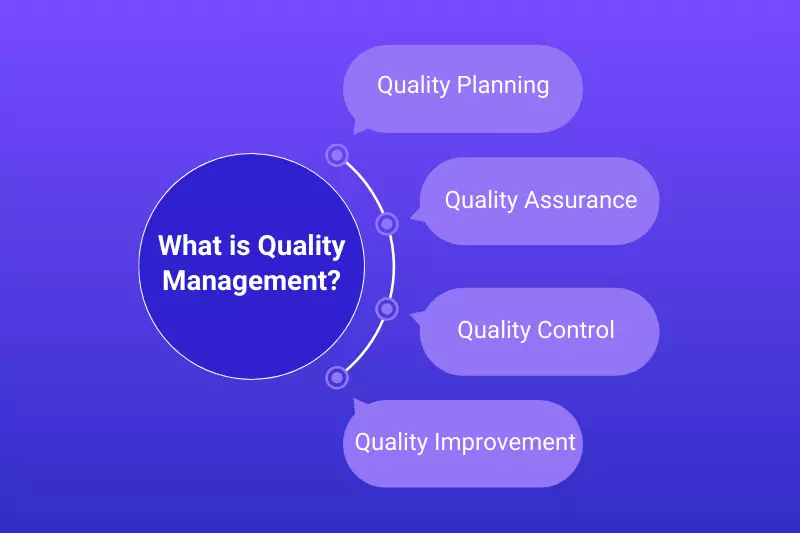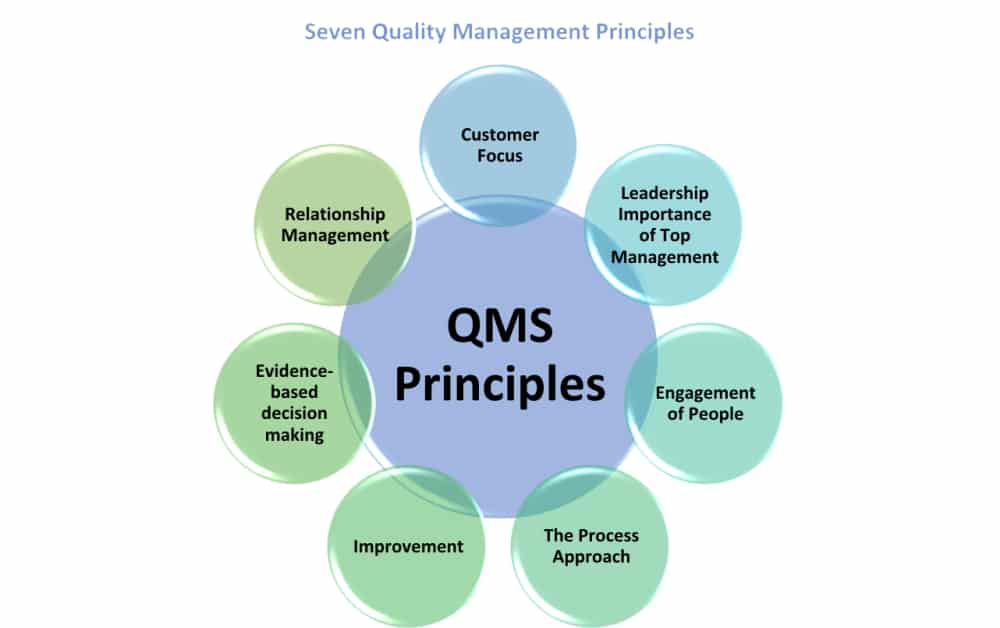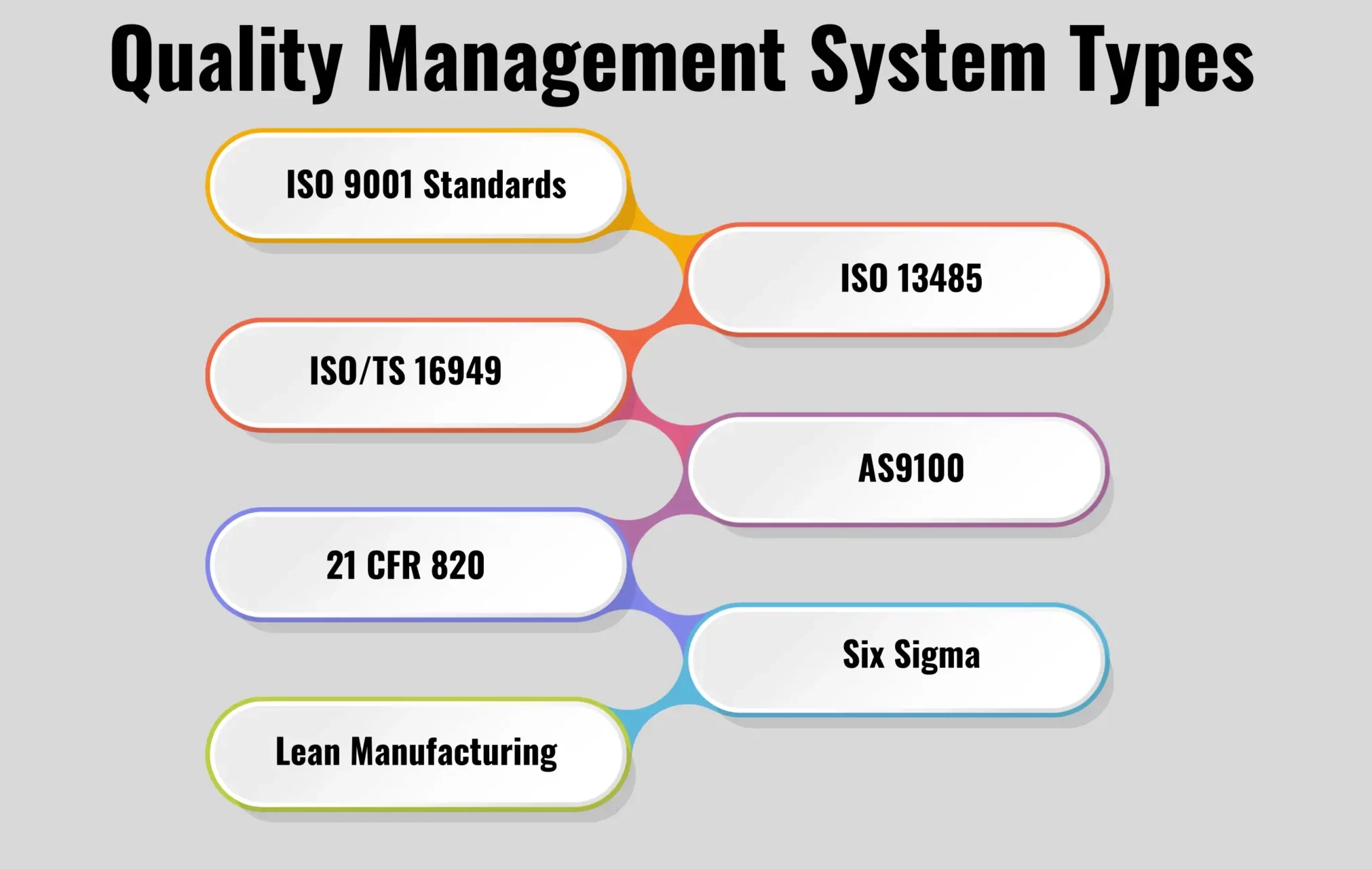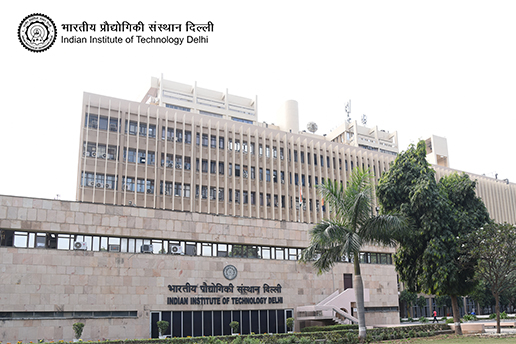Quality Management - Definition, Principles & More
Table of Contents

Have you ever wondered “Why ‘Good Enough’ Isn’t Good Anymore”. Let’s find out.
Sitting in your favourite cafe, waiting for your long-awaited burger. But when you get your order, what you see is a soggy bun, an overcooked patty, and forgotten sauce. You’d not only be disappointed, but the thought of never going back to this cafe will haunt you. Well, that’s how important quality is. In today’s very competitive market, quality is no longer just a touchstone; it’s the pulse of brand trust, customer loyalty, and long-term success.
Welcome to Quality Management—the space where accuracy meets action. It’s not about making sure no defects occur or meeting established standards. It’s about creating a culture where excellence is the norm, not the goal. Whether it’s a product, service, or a team, quality management describes how well you deliver on your commitments, constantly and continually.
But what now? Customers won’t compromise now. One miss, one bad experience, and you miss everything. Quality Management is what keeps the ship sailing smoothly despite customer expectations, regulatory issues, and market rebounds.
In this comprehensive guide, we’ll cover all of the bases, including what quality management is, the powerful principles, and a step-by-step guide to implementing a quality management system in your organisation. Let’s just begin.
What is Quality Management?

*fynd.academy
Quality Management is the process of overseeing all activities and tasks required to maintain a desired level of excellence. It can therefore be considered as a wide-ranging concept, because it consists of policies, processes, and procedures that an organisation uses to ensure that its products and services meet the customer’s expectations and regulatory requirements.
But it’s more than a checkbox on a project management task list. Quality management is a continuous commitment to customer satisfaction, continuous improvement, and operational efficiency. Quality management spans every aspect from how a product is designed to how it will be delivered.
There are four all-around components in any quality management system:
- Quality Planning – The tabulated and documented quality standards and methods for meeting the defined quality standards.
- Quality Control – The monitoring and/or inspection to identify defects caused by any failure to meet defined quality standards.
- Quality Assurance – The planned activity to generate confidence that quality requirements are being fulfilled.
- Quality Improvement – A planned and continued effort to improve a product/service quality and/or quality process.
The Core Principles of Quality Management

*advisera.com
Quality doesn’t happen by accident, it’s driven by quality management principles. These foundational values guide decision-making, foster collaboration, and shape how businesses engage with stakeholders. Let’s explore the seven core quality management principles:
1. Customer Focus
Every successful business will have a single focus point. That point is the customer. The organisations that develop an understanding of their customers and what they need (or want) will be well placed to fulfil their expectations, and possibly exceed them. When an organisational strategy focuses on delivering value to the customer, the customer will follow in loyalty. We are not simply looking for satisfaction; we need our customers to return for the memories built in experiences.
2. Leadership
Leadership is not simply a title; it is a vision. Great leaders set clear goals, and aim for high standards of quality, while engaging followers to unite their efforts under a common goal. Great leaders ensure that quality is everyone’s purpose. No quality is a DNA strand in the organization’s DNA. Leaders cannot simply believe in quality and expect everyone else to follow. When the leaders believe in quality and promote it, the group will follow.
3. People Engagement
People are the lifeblood of a firm and so this is the best focus. When employees feel powerful and respected, they engage more, they contribute ideas, and they own it. Also, the sense of belonging creates teamwork that fosters morale and creativity, all the things that affect quality directly.
4. Process Approach
So instead of inspecting activities independently, a process approach connects all functions to have a systemic view. This allows businesses to achieve the desired outcome more predictably by improving the way each process connects to all processes. It is essential to describe the way we optimally flow products, eliminate bottlenecks, and integrate resources.
5. Continuous Improvement
There is always room for growth regardless of the level of success a business is experiencing. Companies which are committed to ongoing improvement remain ahead of the pack because they continuously review performance, recognizing where they fall short and implementing better solutions. The ongoing improvement mindset catalyzes adaption and long-term success.
6. Evidence-Based Decision Making
Great decisions are not made through guesswork, they’re made from real data. Understanding trends, looking at performance metrics, and using insights to problem-solve helps businesses make smarter, more confident decisions.
Types of Quality Management Systems (QMS)

*sprintzeal.com
A Quality Management System (QMS) is more than just documentation, it’s the engine that drives consistent quality and continuous improvement in an organization. It provides a structured framework of policies, processes, and responsibilities to help businesses meet customer expectations and comply with industry regulations. Depending on the size, goals, and industry, organizations can adopt different types of QMS models. Here are five of the most widely recognized:
- ISO 9001 – the world’s leading quality management systems standard. ISO 9001 is recognised internationally and is therefore an ideal first choice for organizations looking for international recognition because it provides a clear framework for establishing a quality management system (QMS), looking specifically at customer satisfaction, process efficiency and continual improvement. ISO 9001 is flexible and suitable for any industry, once again making it perfect for international recognition.
- Total Quality Management (TQM) – TQM relies on a systems view, involving all employees, from executives to workers. The main philosophy is that quality improvement is everyone’s job. This approach once again focuses on customer satisfaction and processes, but we also solidly have the end goal of continual improvement and business growth.
- Six Sigma – Unlike many of the others, Six Sigma relies on data and analytics, so the premise is to minimize defects and variation in processes. It uses data and storytelling tools and a repeatable framework (DMAIC – Define, Measure, Analyze, Improve, Control) to help organizations improve performance and create quality results.
- Lean Quality Management – Lean focuses on waste and value. In other words, lean will work to remove waste (time, resource, steps in process) with the goal of moving value. It is about being efficient. Lean often works with Six Sigma to create process efficiency and value producing quality results.
- Kaizen as a Continuous Improvement Process – Kaizen – or Kaizen Continuous Improvement – is about small daily improvements. Kaizen is a Japanese word which means “continuous improvement. It is about developing a culture that promotes improvement through sustained celebration of flat-surface improvements that are regimented, taken with intention and made and kept daily.
Steps to Implement a Quality Management

*isoglobal.com.au
Implementing Quality Management is not a simple job; it is a journey that leads to a consistent foundation of improvement. Whether you are at the start-up stage or an established organization, a structured approach will lead to an effective and sustainable Quality Management. Here are the main key quality management steps involved:
Step 1. Define quality objectives
To begin you want to take any action, you need to ask the questions: what does quality mean for your business and your customers? Your quality objectives need to correlate to your mission, customer expectations and any regulatory obligations. These may include reducing errors, delivery times, or improving customer satisfaction – and you will need to be specific because it will be applicable in everything that follows.
Step 2. Gain Leadership buy-in
Quality management is unlikely to succeed without buy-in from the top. Leadership needs to guide for the QMS, by either supporting the initiatives by allocating time and resources, creating a sense of priority, and consistently demonstrating a quality-first mindset. Their efforts will be influential and help build a culture where quality is a core value, rather than an optional one.
Step 3. Document Procedures
Next, describe the procedures that need to be followed in order to achieve quality and document them in the form of standard operating procedures (SOP’s), checklists, flowcharts, and work instructions. Documented procedures minimize errors, standardize procedures, and simplify training.
Step 4. Train Your Team
Everyone is responsible for quality, so it is important to ensure your team has the knowledge and tools so that they can do it right the first time. The training programs should address the principles of quality, job specific skills, and being aware of the process so team members can feel confident and accountable.
Step 5. Monitor & Measure Performance
Identify performance indicators so you can track performance. Regular collection and analysis of data allows you to see if your quality management strategies are performing, or where corrections need to be made.
Step 6. Review & Continually Improve
Timely reviews will provide you with the opportunity to assess what is and isn’t working and apply your learning to improve to fill gaps whilst continuing to advance quality. Quality doesn’t stand still—it’s constantly changing.
Conclusion
Customers come to your brand with high expectations and low patience. Thus, maintaining quality is no longer optional. Quality is not only an individual effort by higher departments and managers; it is a shared responsibility from the boardroom to the shop floor.
Quality Management is the quiet architect of customer trust, operational excellence, and brand credibility. It is the difference between leading and lagging, between being there for the long-term or just the short-term. Whether you have a multinational behemoth or a small start-up, implementing quality within the framework of your processes, mindset, and culture will always be your best investment.
Just remember that while you may save some money by cutting corners today, it may cost you your business tomorrow. So, if you’re ready to master the quality management skills and also understand business management complexities, we recommend that you register for an online BBA program from Manipal University, Jaipur. This comprehensive programme is attuned to the latest pedagogies, preparing you for many contours in your professional life.
How Jaro Education Can Help You?
If you register for the online degree program through us, we go beyond just offering you a platform to build your career; we support you by offering:
- Dedicated academic guidance
- Career counselling support
- immersive and lifelong learning experiences
- Access to alumni events & other benefits
Frequently Asked Questions
What is the main goal of quality management?
The primary goal of quality management is to ensure that a product or service consistently meets customer expectations, complies with regulations, and continuously improves to create long-term business success.
Is quality management only for large businesses?
No. Quality management is crucial for businesses of all sizes. In fact, small businesses can benefit even more by improving efficiency, building customer trust, and staying competitive.
How is quality measured in a company?
Quality can be measured through customer feedback, defect rates, audit results, adherence to standards, process efficiency, and employee performance indicators.
Can quality management improve employee engagement?
Absolutely. When employees are involved in quality processes, feel heard, and see their work contributing to a larger purpose, their engagement and job satisfaction significantly improve.

















